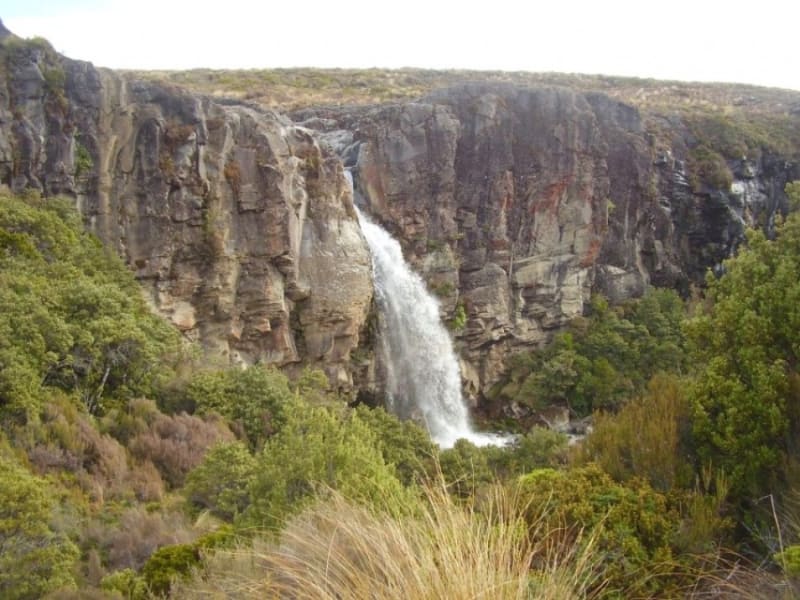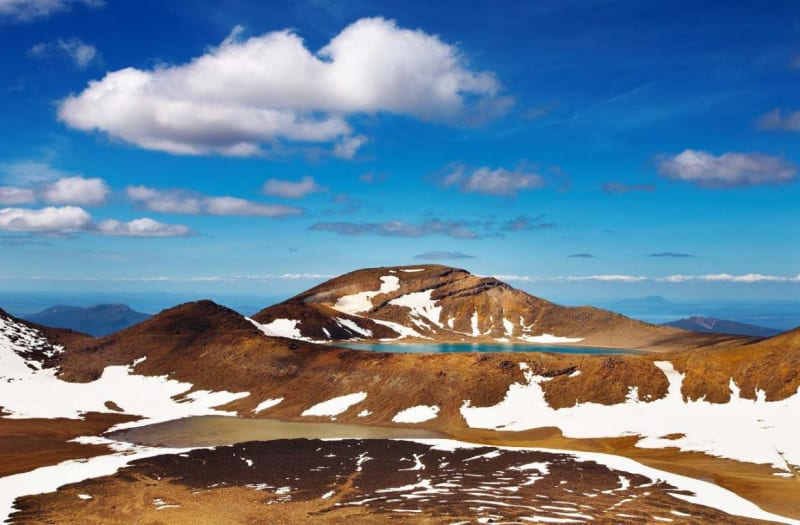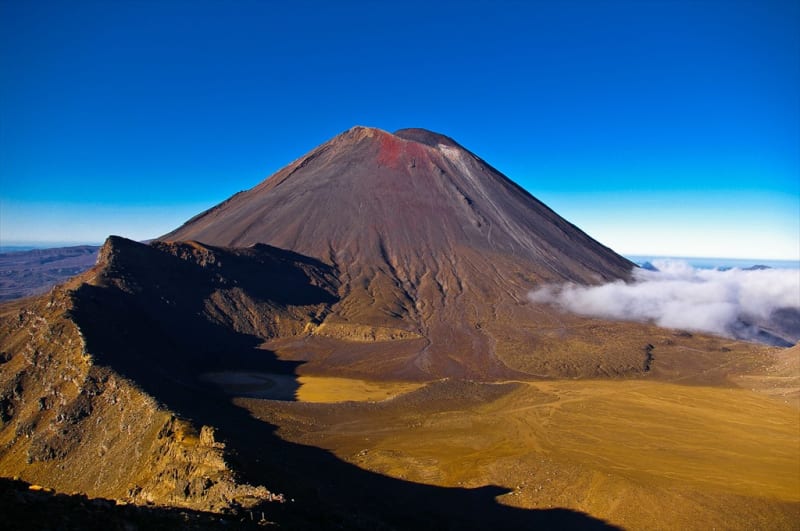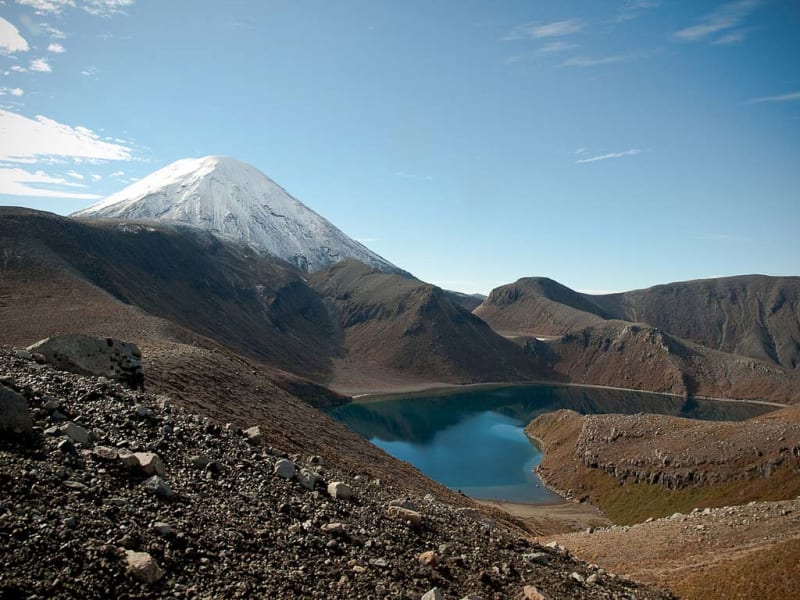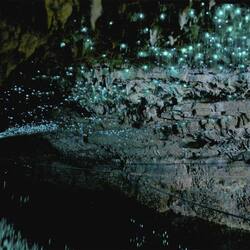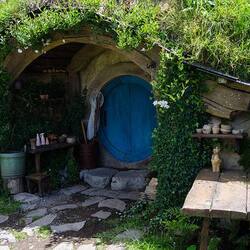Tongariro National Park
Tongariro National Park is located in the center of New Zealand's mountainous North Island, the Volcano Islands, 330 km away. south of Auckland and 320 km away. north of Wellington. In 1887, the supreme leader of the Maori Ngati Horonuku clan presented the British with three "smoking mountains" and the land around them on the condition of creating a nature reserve there, the park's territory expanded and now stands at 795 km2.
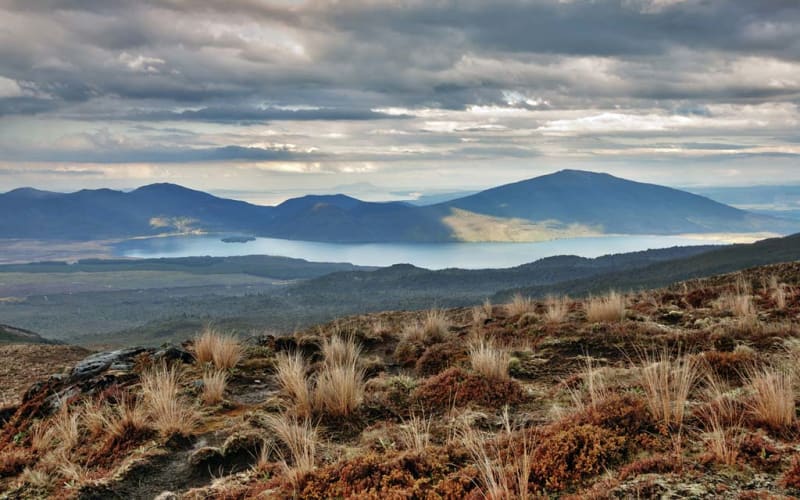
In 1993, Tongariro became the first cultural landscape site to be included in the World Heritage List according to newly revised criteria. The mountains in the park have cultural and religious significance for the Maori people and symbolize the spiritual ties between this community and the island's nature. There are active and extinct volcanoes in the park, and it is characterized by a wide range of ecosystems.
There are three active volcanoes in the Tongariro National Park – Tongariro (1968 m.), Ruapehu (2797 m.) and Ngauruhoe (2291 m.). These mountains are sacred to the Maori, as the grave of the legendary chief Te Heuheu Herakiki is located next to the mountains, and volcanoes are tabooed. The Tongariro and Ngauruhoe mountains are located next to each other, between them is a volcanic plateau with craters and small lakes ("Blue Lake" and "Emerald Lake"). Ruapehu, on the slopes of which one of the best ski resorts in New Zealand is located, last erupted very recently - in 1996. In the famous "Lord of the Rings" trilogy, Ngauruhoe Mountain was the ominous "Fatal Mountain" - Orodruin, and the entire landscape of frozen lava was perfect for filming Mordor, the kingdom of Sauron.

Ruapehu Volcano is the North Island's highest mountain (2,797 m). Translated into Russian, its name means "the thundering abyss." There is a hot lake in its crater, which disappears during the volcano's revival. The water is warm, and the shores are covered with ice and snow. In winter, when skiers come to Ruapeh, there are daredevils who dare to swim in warm water. But the administration of the reserve prudently reminds tourists that the water in the lake can suddenly boil. From time to time, the volcano shows its obstinate character. So, in March 1945, an island appeared on the lake, and four months later a huge dome of black lava formed in its place. Powerful explosions occurred. By December, the eruption had stopped, after which a crater with a diameter of more than 300 m remained, and it gradually began to fill with water. This eruption was recalled by a grandiose catastrophe that occurred eight years later. During the eruption of the volcano, the drain was filled in, through which the excess water in the lake usually poured out. The warm water accumulated in the lake washed away part of the shore, and the stream gushed down the slopes of the volcano. On this day, December 23, 1953, an express train was traveling on the Wellington- Auckland route, hurrying for Christmas. But when the train passed over the bridge over the Uhangaehu River, it crashed into a wall of water, ice and mud. The water flow demolished the bridge, and the entire train crashed into the river. 154 people died.
The local Maori people have a legend. In ancient times, Taupo had Mountains in the middle of Maui's Fish. They lived in friendship and harmony. They worked together, feasted together, and had fun together. But then they started fighting. The younger ones couldn't stand it and left: some to the south, others to the north. Only Tongariro, Ruapehu, Ngauruhoe and Taranaki remained. Tongariro married Pihanga, a beautiful little mountain that lived nearby. Their children were Snow, Hail, Rain and Bad Weather. Pihanga loved the gray-headed Tongariro and was loyal to him. She didn't want to listen to Taranaki harassing her for love. But Taranaki persisted. Then an enraged Tongariro rushed at him. Taranaki took flight. In one night, he reached the very edge of the earth. He still stands there today. Taranaki is no longer afraid of Tongariro's wrath, but sometimes covers his forehead with a veil of mist to hide his tears: he longs for Pihanga. And when Tongariro remembers Taranaki's audacity, a flame of anger boils in his chest, and a heavy cloud of black smoke rises from his peak.
The main component of the unique beauty of the valley of the three volcanoes is the unique and rich flora and fauna left untouched. There are extensive pine forests in the north and west of the park. There you can find amazing cahikatea, kamakhi, pahautea trees and numerous ferns, orchids and mushrooms. On the southern slopes of Raupehu there is a beech forest. And nearby, on gravel and stone layers, colorful mosses and lichens grow in abundance.
There are many interesting birds in the park, including red-fronted parrots, falcons, blue duck, white-eyed honeyeaters, carnivorous and fan-tailed pigeons, and the herbivorous green nestor. The northern kiwi lives in Tongariro, a nocturnal bird, a relative of the ostrich, the size of a chicken, without wings and tail, with a long beak. Kiwi is a symbol of New Zealand. Moose, wild pigs, rabbits and hares are also found in these parts. Deer, introduced by Europeans, live there. These deer cause great damage to forests, so they are not protected. Moreover, hunting them is encouraged. There are even special groups of hunters involved in shooting animals.
The development of the park was carried out by the British very carefully, but at the same time, they did not forget about tourists. Road construction to the village of Huacapapa began in the 1920s. The first ski hut was built in 1923 on an elevation of 1770 m. After that, a road was built, and in 1938 a ski lift was equipped. Such an early construction of the tourist infrastructure explains the presence of a fully developed ski tourism sector within the national park. The Chateau Tongariro Hotel in Huacapapa was founded in 1929.
In addition to skiing and snowboarding in winter, hiking and rock climbing are organized for tourists in the park in summer. There are also opportunities for sport fishing, mountain biking, horseback riding, and rafting. Tongariro is now one of the most popular tourist destinations in the country, with more than 80,000 tourists visiting it throughout the year, and 5,000 or more people visit here during the ski season.

